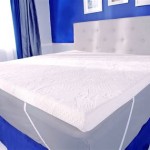Can Bed Bugs Climb Up Plastic Containers?
Bed bugs are notorious for their ability to navigate seemingly impossible terrains, leaving homeowners wondering about their reach. While their reputation for climbing smooth surfaces is well-established, a common question arises: Can bed bugs climb up plastic containers?
The answer is a bit more nuanced than a simple yes or no. While bed bugs are not known for readily climbing smooth, vertical plastic surfaces, certain factors can influence their ability to do so. Understanding these factors can help homeowners better protect their belongings and prevent infestations.
Bed Bugs' Climbing Abilities
Bed bugs are equipped with tiny claws on their legs, allowing them to grip onto rough surfaces and climb vertical structures. They have a remarkable ability to scale walls, furniture, and even fabric, often defying gravity with their tenacious clinging. However, their climbing prowess is not limitless, and smooth surfaces pose a challenge.
While bed bugs are not particularly adept at climbing perfectly smooth surfaces, their ability to climb up plastic containers can vary depending on several factors. The texture, roughness, and presence of cracks or crevices in the plastic surface can influence their ability to gain traction and ascend.
Factors Influencing Bed Bug Climbing
1. Texture and Roughness
Bed bugs rely on their claws to grip onto surfaces. Smooth plastic surfaces offer limited traction, making it more difficult for them to climb. Rougher plastic, such as those with a textured finish, can provide more grip for bed bugs, making it easier for them to ascend.
2. Cracks and Crevices
Even if a plastic container has a smooth surface, bed bugs can use cracks, crevices, and any imperfections in the plastic to help them climb. These small openings provide points of contact where bed bugs can anchor their claws and pull themselves upwards. Any slight imperfection in the plastic surface can be exploited by these persistent pests.
3. Container Shape and Size
The shape and size of the plastic container can also play a role in bed bug climbing. Tall, narrow containers with limited space for bed bugs to grip or hold onto can be challenging for them to climb. Conversely, wide, flat containers with larger surface areas may be easier for bed bugs to navigate.
Protecting Your Belongings
While bed bugs may not readily climb smooth plastic containers, it is always best to err on the side of caution. To minimize the risk of bed bug infestations, consider the following tips:
- Store food items in airtight containers to prevent bed bugs from accessing them.
- Use containers with smooth, continuous surfaces, avoiding those with cracks or crevices.
- Elevate stored items off the floor to create a barrier between bed bugs and your belongings.
- Inspect stored items regularly for signs of bed bugs, such as tiny black spots or shed skins.
By being proactive and taking preventive measures, you can significantly reduce the risk of bed bug infestations and protect your belongings from these persistent pests.

Fs1251 Cost Effective And Money Wasting Bed Bug Control Methods Rutgers Njaes

Can Bed Bugs Climb Plastic Metal Pestseek

Can Bed Bugs Climb Plastic

What Is A Bed Bug Interceptor Insects In The City

Fs1251 Cost Effective And Money Wasting Bed Bug Control Methods Rutgers Njaes

Can Bed Bugs Walk On Plastic Metal Tiles And Hardwood Floors
Here Are The Best Ways To Avoid Bed Bugs

Bed Bugs Umn Extension

Where Do Bed Bugs Live How To Find Their Hiding Spot Terminix

Are Bed Bug Traps Really Worth Trying







